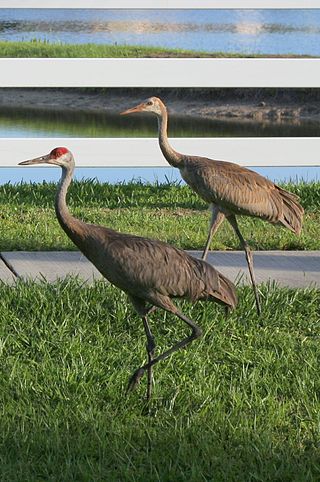
Convolvulaceae, commonly called the bindweeds or morning glories, is a family of about 60 genera and more than 1,650 species. These species are primarily herbaceous vines, but also include trees, shrubs and herbs. The tubers of several species are edible, the best known of which is the sweet potato.

Tilapia is the common name for nearly a hundred species of cichlid fish from the coelotilapine, coptodonine, heterotilapine, oreochromine, pelmatolapiine, and tilapiine tribes, with the economically most important species placed in the Coptodonini and Oreochromini. Tilapia are mainly freshwater fish inhabiting shallow streams, ponds, rivers, and lakes, and less commonly found living in brackish water. Historically, they have been of major importance in artisanal fishing in Africa, and they are of increasing importance in aquaculture and aquaponics. Tilapia can become a problematic invasive species in new warm-water habitats such as Australia, whether deliberately or accidentally introduced, but generally not in temperate climates due to their inability to survive in cold water.

The sandhill crane is a species of large crane of North America and extreme northeastern Siberia. The common name of this bird refers to their habitat such as the Platte River, on the edge of Nebraska's Sandhills on the American Great Plains. Sandhill Cranes are known to frequent the edges of bodies of water. The central Platte River valley in Nebraska is the most important stopover area for the nominotypical subspecies, the great sandhill crane, with up to 450,000 of these birds migrating through annually.

Nyctaginaceae, the four o'clock family, is a family of around 33 genera and 290 species of flowering plants, widely distributed in tropical and subtropical regions, with a few representatives in temperate regions. The family has a distinctive fruit type called an accessory fruit or anthocarp, and many genera have extremely large pollen grains.

The Tingidae are a family of very small insects in the order Hemiptera that are commonly referred to as lace bugs. This group is distributed worldwide with about 2,000 described species.
Gonogenia is a genus of beetles in the family Carabidae, containing the following species:

Cerconota is a genus of moths in the family Depressariidae. In 1991, I. W. B. Nye and David Stephen Fletcher included it in the family Oecophoridae and the subfamily Stenomatinae. It was later placed in the family Elachistidae and subfamily Stenomatinae by Ronald W. Hodges, in Niels Peder Kristensen (1999). Other classifications placed them in the Elachistidae or Oecophoridae, but they actually seem to belong to the Depressariidae.

Asobara is a genus of parasitoid wasps in the family Braconidae. It contains around forty species. The genus is best known for the Drosophila parasitoid Asobara tabida, which is notable as both a model for parasitoid wasp infection in insects, and also as a representative of the hologenome theory of evolution. Asobara tabida is commensally infected with Wolbachia, and cannot reproduce in the absence of Wolbachia infection. As such, the genome of Asobara is directly tied to the genome of its commensal Wolbachia symbiont, and the two are considered to have a hologenome.
Acleris tabida is a species of moth of the family Tortricidae. It is found in China (Yunnan).
Coptops illicita is a species of beetle in the family Cerambycidae. It was described by Francis Polkinghorne Pascoe in 1865. It is known from Indonesia and the Philippines.

Isohydnocera is a genus of checkered beetles in the family Cleridae. There are about 14 described species in Isohydnocera.
Acholla is a genus of assassin bugs in the family Reduviidae. There are at least three described species in Acholla, found in North America.
Leptodictya is a genus of lace bugs in the family Tingidae. There are at least 60 described species in Leptodictya.
Mixogaster breviventris is a species of syrphid fly in the family Syrphidae.
Chrysotoxum chinook is a species of syrphid fly in the family Syrphidae.
Aradus funestus is a species of flat bug in the family Aradidae. It is found in North America.

Strigatella tabida is a species of sea snail, a marine gastropod mollusk, in the family Mitridae, the miters or miter snails.

Thysanota is a genus of air-breathing land snails, terrestrial pulmonate gastropod mollusks in the family Charopidae. These snails are restricted to South India and Sri Lanka.
Animal Ethics is a nonprofit organization formed to promote discussion and debate around issues in animal ethics and to provide information and resources for animal advocates. They also do outreach work in several countries on the issue of speciesism. Their aim is to create a world where moral consideration is extended to all sentient beings. The organization's website covers topics such as speciesism, sentience, veganism and wild animal suffering and has content translated into several languages.









